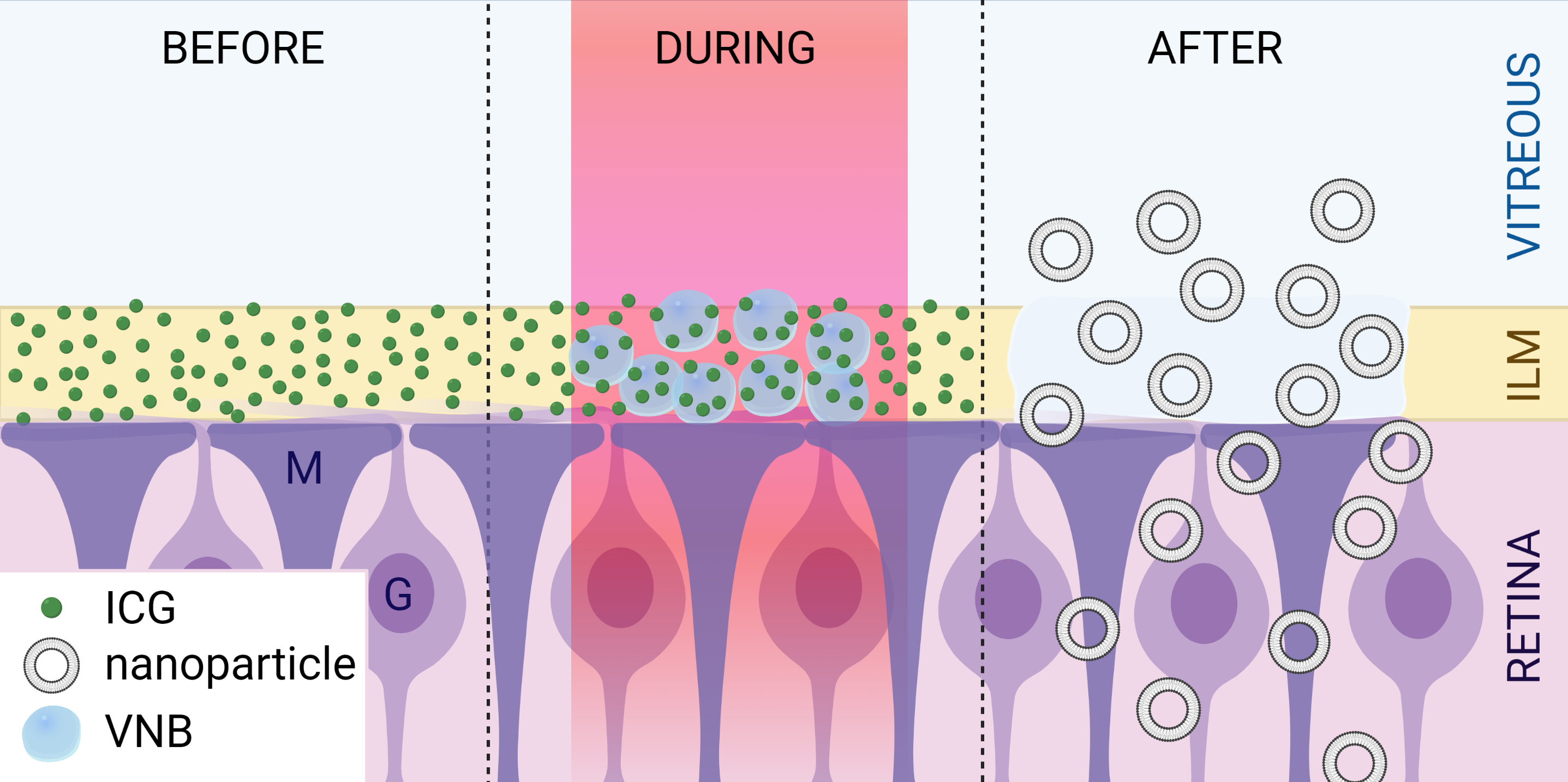 |
| This study found that ICG-mediated photodisruption of the ILM may safely enhance nanoparticle delivery to the retina. Photo: ©2022 Association for Research in Vision and Ophthalmology. |
Researchers at the University of Ghent are developing an interesting new technique to improve drug delivery to the retina. Many intravitreal injections of larger therapeutics such as gene carriers and stem cells have difficulty reaching the retina, and studies have demonstrated that the internal limiting membrane (ILM) is the primary barrier. During their presentation today at the 2022 ARVO meeting in Denver, the researchers explained that photodisruption can generate therapeutic entryways for nanoparticles into the retina through controlled damage of the ILM.
In the ex vivo study, photothermal indocyanine green (ICG) dye was applied on top of bovine retinal explants. The explants were irradiated with pulsed laser light to create vapor nanobubbles in a process called “photoporation.” Bubble collapse resulted in ILM damage.
The researchers reported that the strongest conditions (1mg/ml ICG; 0.43J/cm2) resulted in significant cell death, especially in the ganglion cell layer and inner nuclear layer, whereas milder conditions (0.1mg/ml ICG; 0.43J/cm2) didn’t affect retinal viability at 24 hours. They pointed out that the mild conditions resulted in a nearly five-fold increase in retinal luciferase expression vs. explants treated with lipid nanoparticles only, which were dripped on top of explants prior to culture to assess impact on delivery. According to dark-field microscopy of human ILM, this effect is based on pore formation from vapor nanobubble generation.
The authors noted in their abstract that this ex vivo study suggests ICG-mediated photodisruption of the ILM is a safe way for enhancing nanoparticle delivery to the retina. They plan to assess this approach’s safety and efficacy in vivo.
Original abstract content © Association for Research in Vision and Ophthalmology 2022.
Peynshaert K, De Clerck K, Vanluchene H, et al. Photodisruption of the ILM to enhance retinal drug delivery after intravitreal injection. ARVO 2022 annual meeting. |

